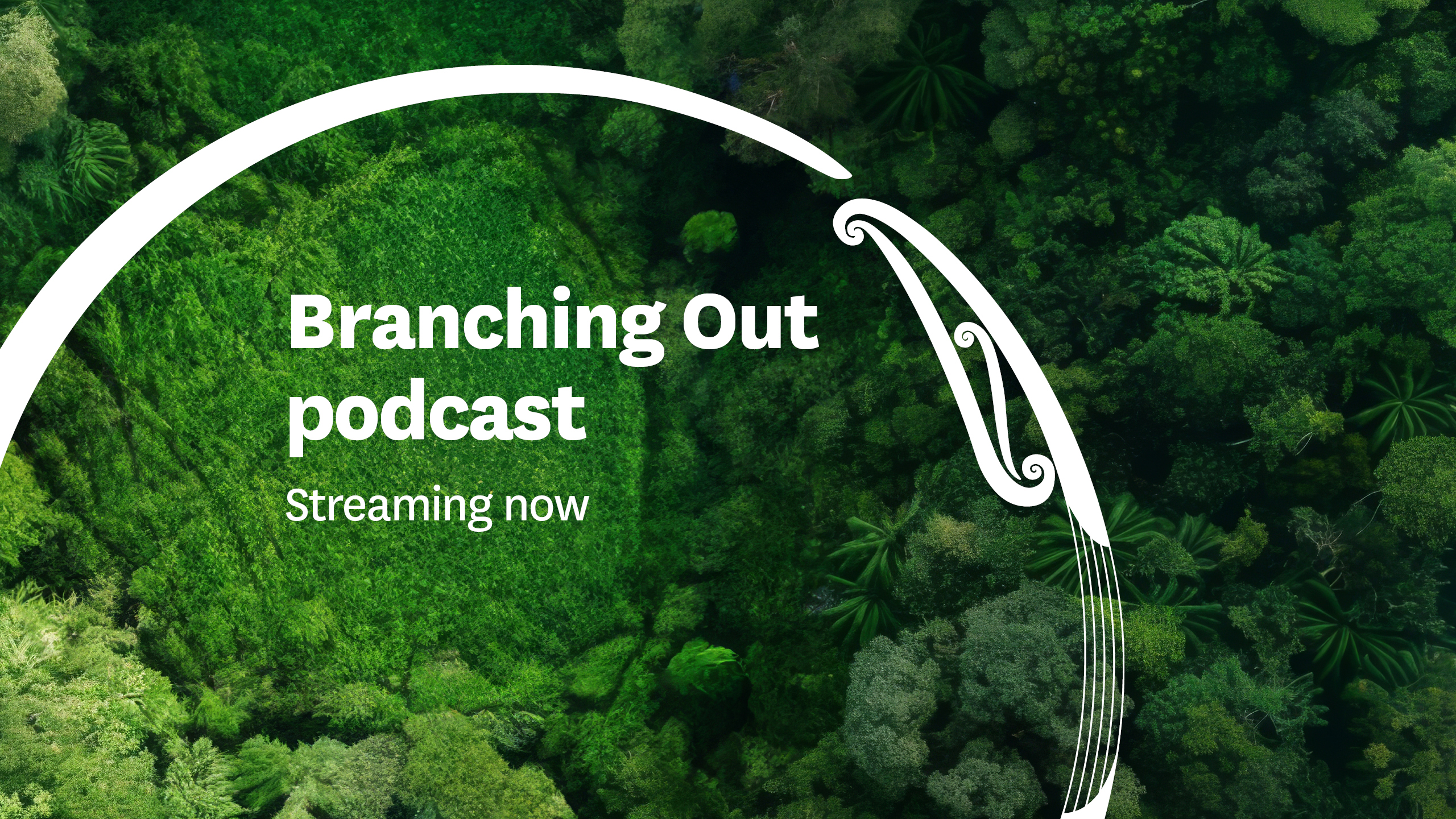Branching Out

Glossary of Terms
Explore key terms from the episodes below.
Active Adaptation – The process of organisms actively adjusting or evolving over time to better survive in their changing environment. In this context, it's the idea that species or ecosystems can change in response to challenges like climate change, rather than just being protected or preserved passively.
Carbon Sequestration – The process of capturing and storing carbon dioxide (CO2) from the atmosphere, often by trees or plants.
Genetics – The study of genes and heredity. In the context of this conversation, it refers to how traits are passed from one generation to the next, and how scientists can study and manage these traits to improve things like tree breeding.
Genome – The complete set of genes or genetic material present in an organism. It includes all the instructions for how that organism is built, how it functions, and how it can grow and develop.
Genotype – The genetic makeup of an individual organism.
Germplasm – Genetic material from plants used for breeding or conservation.
Hybridisation – The process of breeding two different species or varieties to produce offspring with specific characteristics from both parents.
Kaitiaki – A term for a guardian or protector, often used in the context of someone who looks after the environment, ensuring it is preserved and cared for in a sustainable way for future generations.
Motu – In this context, New Zealand as a country, rather than an island.
Papakāinga – A term referring to a traditional Māori village or community settlement, often located on ancestral land, where Māori live in a way that maintains cultural practices and values
Phenotype – The physical appearance or traits of an organism, such as its height, colour, or shape. These traits are influenced by the organism's genes (genotype) and its environment.
Phenotyping – The process of measuring and observing the physical traits or characteristics of an organism, such as the size, shape, or colour of a tree. This helps scientists understand how those traits relate to the organism's environment and how they might be passed down to future generations.
Quantitative Genetics – A branch of genetics that focuses on traits that are controlled by many genes, such as height or growth rate, and how these traits vary within a population. It uses measurements and data to predict how these traits will be passed on and how they can be improved over generations.
Resilience – The ability of a species or ecosystem to recover from or adapt to challenges like disease, drought, or other environmental stresses.
Seed Orchard – A specially managed area where seeds are collected from selected trees for breeding or replanting purposes.
Speciating – The process by which a single species splits into two or more distinct species over time, often due to environmental changes or isolation. This leads to the development of new species with different characteristics.
